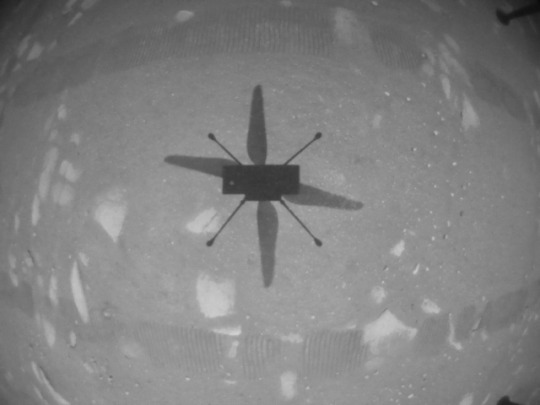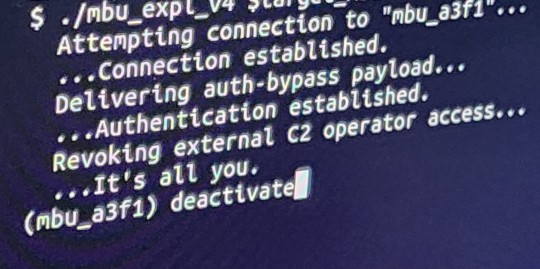#autonomous flight control
Explore tagged Tumblr posts
Text
Aircraft Flight Control Systems Market Forecast: Growth Trends and Opportunities (2024-2030)

The Aircraft Flight Control Systems Market has undergone significant transformations over the years, driven by technological advancements and the demand for enhanced safety, efficiency, and automation. Among these technological evolutions, artificial intelligence (AI) has emerged as a game-changer, redefining how modern aircraft operate. AI integration into flight control systems is revolutionizing aircraft navigation, reducing pilot workload, and improving overall safety. As AI continues to advance, its role in the Aircraft Flight Control Systems Market will become even more prominent.
AI and the Evolution of Flight Control Systems
Traditional aircraft flight control systems relied on mechanical linkages and hydraulic actuators. The advent of fly-by-wire (FBW) technology replaced these conventional controls with electronic interfaces, significantly improving aircraft performance. Today, AI is taking flight control technology a step further by introducing predictive analytics, machine learning algorithms, and automation. AI-powered systems can analyze vast amounts of data in real time, making intelligent decisions to optimize aircraft operations and enhance safety.
AI in Fly-By-Wire Technology
Fly-by-wire (FBW) systems have transformed aircraft flight control by eliminating the need for heavy mechanical components. AI enhances these systems by enabling:
Adaptive control algorithms that adjust to changing flight conditions
Predictive maintenance to prevent component failures
Automated responses to emergency situations
As AI-powered flight control systems become more sophisticated, they enhance situational awareness and improve decision-making capabilities for pilots, contributing to the growth of the Aircraft Flight Control Systems Market.
Download Pdf Brochure: https://www.marketsandmarkets.com/pdfdownloadNew.asp?id=117067292
The Role of AI in Enhancing Safety
Safety is a critical concern in aviation, and AI is playing a vital role in making air travel safer. AI-driven flight control systems can process data from multiple sensors and provide real-time insights to pilots. These systems are capable of:
Identifying potential hazards and suggesting corrective actions
Reducing human error by automating complex decision-making tasks
Enhancing autopilot functions for smoother and more efficient flight operations
The integration of AI-driven safety mechanisms is a key factor driving the expansion of the Aircraft Flight Control Systems Market.
AI and Autonomous Flight Control
The future of aviation is moving towards autonomous flight control, and AI is at the heart of this transformation. AI-driven systems can manage flight operations with minimal human intervention, paving the way for fully autonomous aircraft. AI enables:
Real-time route optimization based on weather and traffic conditions
Autonomous landing and takeoff capabilities
AI-assisted air traffic management for seamless coordination with ground control
With these advancements, AI is reshaping the future of the Aircraft Flight Control Systems Market, making air travel more efficient and reliable.
Ask For Sample Report: https://www.marketsandmarkets.com/requestsampleNew.asp?id=117067292
Challenges of AI Integration in Flight Control Systems
Despite its numerous advantages, integrating AI into flight control systems presents several challenges:
Regulatory Compliance: Stringent aviation regulations require AI-powered flight control systems to meet rigorous safety standards.
Cybersecurity Risks: AI-driven flight control systems are vulnerable to cyber threats, necessitating robust security measures.
Certification Complexities: AI algorithms must undergo extensive testing and validation before receiving approval from aviation authorities.
Addressing these challenges is crucial for the continued growth and adoption of AI in the Aircraft Flight Control Systems Market.
AI's Impact on Market Growth
The Aircraft Flight Control Systems Market is experiencing significant growth, driven by AI advancements. According to industry estimates, the market is expected to grow from USD 14.5 billion in 2022 to USD 21.5 billion by 2027, with a CAGR of 8.2%. The increasing demand for AI-powered flight control systems is contributing to this expansion. Factors influencing market growth include:
Rising adoption of AI-driven automation in aviation
Growing demand for fuel-efficient and lightweight aircraft
Increasing investments in AI research and development
AI is playing a pivotal role in shaping the future of the Aircraft Flight Control Systems Market, making flight operations safer, more efficient, and cost-effective.
AI is transforming the Aircraft Flight Control Systems Market by enhancing safety, efficiency, and automation. As AI technology continues to evolve, its applications in flight control systems will expand, paving the way for a new era of intelligent aviation. While challenges remain, the benefits of AI integration far outweigh the hurdles, making it a crucial component of future aircraft flight control systems.
#aircraft flight control systems market#ai in flight control systems#fly-by-wire technology#autonomous flight control#ai in aviation safety#future of aircraft flight control systems
0 notes
Text
Fruit flies could hold the key to building resiliency in autonomous robots - Technology Org
New Post has been published on https://thedigitalinsider.com/fruit-flies-could-hold-the-key-to-building-resiliency-in-autonomous-robots-technology-org/
Fruit flies could hold the key to building resiliency in autonomous robots - Technology Org


Mechanical Engineering Assistant Professor Floris van Breugel has been awarded a $2 million National Science Foundation (NSF) grant to adapt autonomous robots to be as resilient as fruit flies.
Resiliency in autonomous robotic systems is crucial, especially for robotics systems used in disaster response and surveillance, such as drones monitoring wildfires. Unfortunately, modern robots have difficulty responding to new environments or damage to their bodies that might occur during disaster response, van Breugel wrote in his grant application. In contrast, living systems are remarkably adept at quickly adjusting their behavior to new situations thanks to redundancy and flexibility within their sensory and muscle control systems.
Scientific discoveries in fruit flies have helped shed light on how these insects achieve resiliency in flight, according to van Breugel. His project will translate that emerging knowledge on insect neuroscience to develop more resilient robotic systems.
“This is a highly competitive award on a topic with tremendous potential impact, which also speaks of the research excellence of the investigator and Mechanical Engineering at UNR,” Petros Voulgaris, Mechanical Engineering department chair, said.
This research aligns with the College of Engineering’s Unmanned Vehicles research pillar.
Engineering + flies
The intersection of engineering and flies long has been an interest to van Breugel.
“As an undergrad, I did research where my main project was designing a flying, hovering thing that birds or insects vaguely inspired,” he said. “Throughout that project, I realized that the hard part, which was more interesting to me, is once you have this mechanical thing that can fly, how do you control it? How do you make it go where you want it to go? If it gets broken, how do you adapt to that?”
Van Breugel says he is examining how “animals can repurpose or reprogram their sensorimotor systems ‘on the fly’ to compensate for internal damage or external perturbations quickly.”
Working with van Breugel on the grant are experts in insect neuroscience, including Michael Dickinson, professor of bioengineering and aeronautics at the California Institute of Technology (and van Breugel’s Ph.D. advisor) as well as Yvette Fisher, assistant professor of neurobiology at U.C. Berkeley. Both have pioneered aspects of brain imaging in flies in regards to the discoveries and technology in the field that van Breugel is utilizing in this research project. Also on the project: Bing Bruton, associate professor of biology at the University of Washington, who brings her expertise in computational neuroscience.
The importance of flies in the realm of both engineering and neuroscience stems from the combination of their sophisticated behavior together with brains that are numerically simple enough that they can be studied in detail. This “goldilocks” combination, van Bruegel said, makes it feasible to distill properties of their neural processing into fundamental engineering principles that can be applied to robotics systems.
As part of the grant, research experiences will be offered to middle school, high school and undergraduate students to participate in both neuroscience and robotics research. Van Breugel and his team also will develop open-source content to help bring neuroscience fluency to engineering students. This aligns with the College of Engineering’s Student Engagement operational pillar.
Source: University of Nevada, Reno
You can offer your link to a page which is relevant to the topic of this post.
#A.I. & Neural Networks news#Animals#autonomous robots#Behavior#bing#Biology#birds#Brain#brains#Building#control systems#Disaster response#Discoveries#drones#engineering#flight#Foundation#fruit flies#Fundamental#how#Imaging#insects#it#Light#Link#Mechanical engineering#monitoring#muscle#neurobiology#Neuroscience
3 notes
·
View notes
Text

What We Learned from Flying a Helicopter on Mars

The Ingenuity Mars Helicopter made history – not only as the first aircraft to perform powered, controlled flight on another world – but also for exceeding expectations, pushing the limits, and setting the stage for future NASA aerial exploration of other worlds.
Built as a technology demonstration designed to perform up to five experimental test flights over 30 days, Ingenuity performed flight operations from the Martian surface for almost three years. The helicopter ended its mission on Jan. 25, 2024, after sustaining damage to its rotor blades during its 72nd flight.
So, what did we learn from this small but mighty helicopter?
We can fly rotorcraft in the thin atmosphere of other planets.
Ingenuity proved that powered, controlled flight is possible on other worlds when it took to the Martian skies for the first time on April 19, 2021.
Flying on planets like Mars is no easy feat: The Red Planet has a significantly lower gravity – one-third that of Earth’s – and an extremely thin atmosphere, with only 1% the pressure at the surface compared to our planet. This means there are relatively few air molecules with which Ingenuity’s two 4-foot-wide (1.2-meter-wide) rotor blades can interact to achieve flight.
Ingenuity performed several flights dedicated to understanding key aerodynamic effects and how they interact with the structure and control system of the helicopter, providing us with a treasure-trove of data on how aircraft fly in the Martian atmosphere.
Now, we can use this knowledge to directly improve performance and reduce risk on future planetary aerial vehicles.

Creative solutions and “ingenuity” kept the helicopter flying longer than expected.
Over an extended mission that lasted for almost 1,000 Martian days (more than 33 times longer than originally planned), Ingenuity was upgraded with the ability to autonomously choose landing sites in treacherous terrain, dealt with a dead sensor, dusted itself off after dust storms, operated from 48 different airfields, performed three emergency landings, and survived a frigid Martian winter.
Fun fact: To keep costs low, the helicopter contained many off-the-shelf-commercial parts from the smartphone industry - parts that had never been tested in deep space. Those parts also surpassed expectations, proving durable throughout Ingenuity’s extended mission, and can inform future budget-conscious hardware solutions.

There is value in adding an aerial dimension to interplanetary surface missions.
Ingenuity traveled to Mars on the belly of the Perseverance rover, which served as the communications relay for Ingenuity and, therefore, was its constant companion. The helicopter also proved itself a helpful scout to the rover.
After its initial five flights in 2021, Ingenuity transitioned to an “operations demonstration,” serving as Perseverance’s eyes in the sky as it scouted science targets, potential rover routes, and inaccessible features, while also capturing stereo images for digital elevation maps.
Airborne assets like Ingenuity unlock a new dimension of exploration on Mars that we did not yet have – providing more pixels per meter of resolution for imaging than an orbiter and exploring locations a rover cannot reach.

Tech demos can pay off big time.
Ingenuity was flown as a technology demonstration payload on the Mars 2020 mission, and was a high risk, high reward, low-cost endeavor that paid off big. The data collected by the helicopter will be analyzed for years to come and will benefit future Mars and other planetary missions.
Just as the Sojourner rover led to the MER-class (Spirit and Opportunity) rovers, and the MSL-class (Curiosity and Perseverance) rovers, the team believes Ingenuity’s success will lead to future fleets of aircraft at Mars.
In general, NASA’s Technology Demonstration Missions test and advance new technologies, and then transition those capabilities to NASA missions, industry, and other government agencies. Chosen technologies are thoroughly ground- and flight-tested in relevant operating environments — reducing risks to future flight missions, gaining operational heritage and continuing NASA’s long history as a technological leader.
youtube
You can fall in love with robots on another planet.
Following in the tracks of beloved Martian rovers, the Ingenuity Mars Helicopter built up a worldwide fanbase. The Ingenuity team and public awaited every single flight with anticipation, awe, humor, and hope.
Check out #ThanksIngenuity on social media to see what’s been said about the helicopter’s accomplishments.
youtube
Learn more about Ingenuity’s accomplishments here. And make sure to follow us on Tumblr for your regular dose of space!
5K notes
·
View notes
Text
How to heal your nervous system after a lifetime of abandonment
If you’ve only ever experienced abandonment—whether emotional or physical—your nervous system has likely been in survival mode for most of your life. This means your body and mind have adapted to expect instability, making safety feel unfamiliar and uncomfortable. Healing isn’t just about ��thinking positively” or “moving on” but about rewiring your nervous system to feel safe in connection, in stillness & within yourself
When abandonment becomes a pattern, your body learns to stay hyper vigilant, always scanning for signs that people will leave. It will emotionally shut down to avoid further pain. You will attach yourself quickly to people because you are scared that if you don't, you will lose them. You will feel unsafe in healthy relationships and sabotage them
This isn’t a mindset issue—it’s a nervous system issue. Your body is conditioned to see abandonment as inevitable, which is why true healing must happen on a physiological level
So to take control, you have to teach your body that safety exists (even if you don't believe it). And since you probably don't know why that is, you have to start small
I have spoken about these things before, but I am going to explain what they actually do, so that you see that even though they seem silly and pointless, they are very important. You thinking everything has to be a struggle and difficult is just you thinking from a place of survival
Grounding exercises - Grounding actually engages your sense to bring you back to the present moment and help reduce anxiety. Walking barefoot, holding something warm, or pressing your feet into the floor sends signals to your brain that you are physically here and safe. It activates the prefrontal cortex (the rational part of your brain) and quiets the amygdala (the fear center) helping you feel more in control
Weighted blankets- Trigger the release of serotonin (the "feel-good" neurotransmitter) and reduces cortisol (the stress hormone). Deep pressure mimics the calming effect of a hug, which lowers heart rate and blood pressure. It helps regulate the autonomic nervous system, shifting you from fight or flight mode to a state of rest and relaxation
Breathing exercises - They activate the parasympathetic nervous system (PNS), which counteracts stress and signals safety to the brain. Inhaling for 4 seconds, holding for 4 and exhaling for 6 stimulates the vagus nerve, which lowers cortisol and increases feelings of calm. Longer exhales specifically slow your heart rate, reinforcing a sense of control and relaxation
These small habits may feel insignificant at first, but over time, they help retrain your brain and body to recognize safety—not as something foreign, but as your new normal
Abandonment leaves deep emotional wounds, often from childhood. If no one ever soothed you, you must learn to soothe yourself
Affirmations for safety: Instead of just saying “I am worthy”, try “I am safe in this moment” or “I do not have to earn love”
Inner child work: Imagine speaking to your younger self. What would they need to hear? Start telling yourself those things daily
If you’ve only known unpredictable or inconsistent love, you may chase people or push them away before they can leave. Start practicing security within yourself first by keeping small promises to yourself. Surrounding yourself with emotionally safe people, even if it's just online or even books at first. Something that feels SAFE to you
Your nervous system might be wired to assume people will leave, so you either cling or detach first. Instead, start training yourself to trust in small ways by watching for people who are consistent, emotionally available and respect your boundaries. You are taking back control by paying attention to their actions and deciding if you want them in your life. When something feels safe, let it last as long as it should, don't sabotage it just because you are expecting the worst. You are worthy of good connections
Teach your nervous system that love doesn’t have to be earned. That you don’t have to fight for people who are meant to stay. You are not broken—you are healing
957 notes
·
View notes
Text
Writing Notes: Trauma Responses
Over-sharing
Over-explaining
Trauma dumping
Hyper-independence
Hypersexualization
People pleasing
Trauma is a mental injury, and our body may react to unconscious memories of significant negative events unknown even to us. Our body subconsciously protects us from future trauma.
How we respond to trauma has consequential implications on how we live our lives. Trauma responses ensure physical and emotional safety; however, these unintended reactions may interfere with our ability to flourish.
Trauma responses are innate; they occur without our consciousness.
A reaction to a perceived threat is called a trauma response. It is a survival instinct; it is reflexive and automatic.
Your body reacts to this perceived threat without your approval. Smells and sounds may remind your clients of the trauma they experienced and bring about memories that perhaps at one time were repressed. Despite the individual’s awareness, the unconscious self still remembers, and the body reacts.
A trauma response is how your nervous system has adapted following a significant situation and can manifest in various ways, whether there is an actual threat, or a threat is perceived.
Trauma responses cause a person to be hypervigilant, which may create an overwhelmed individual under normal circumstances. Contrarily, a person experiencing hypervigilance may also prove to be an effective person during crises. Trauma responses get a bad rap; however, if clients can recognize them, they can prevent them from controlling their lives.
Typical Trauma Response Types
Originally, fight and flight were thought to be the only responses to stress, which focused on the autonomic nervous system (McCarty, 2016; Katz et al., 2021).
Freeze, as a trauma response type, was later developed after observing lab rats in stressful situations (Katz et al., 2021).
Today, the 4 most commonly known trauma response types include fight, flight, freeze, and fawn. Each of these actions is an adaptive, functional short-term survival counteraction.
Fight
As we know, the fight response involves combativeness toward the perpetrator. Example demonstrations of fight may include kicking, punching, or threatening the attacker (Katz et al., 2021). It may also include being verbally argumentative and yelling.
If an individual is quick to anger, they may be demonstrating a fight trauma response. This symptom of arousal may indicate self-criticism when someone feels internally threatened (Germer & Neff, 2015).
This reaction may include any attempt to stand up against a threat. It is a form of assertiveness. At a healthy level, it delineates healthy boundaries.
At a primal level, if an animal feels it is being attacked, it may choose to fight back if the threat is manageable. If the animal feels that it cannot successfully fight the threat, it may resort to our next trauma response.
Flight
Flight involves literally or metaphorically running from an actual or perceived danger. It is an act of nonconfrontation and avoidance of a threat. More importantly, it is a biologically determined sequence of responses to stress (Bracha, 2004). Flight is a disengagement from the stress-inducing stimulus. Paired with fight, it is the cornerstone of stress response research by Walter B. Cannon (McCarty, 2016).
Flight may include the habit of leaving the room or fleeing from the home following an argument. It may also include drug and alcohol abuse to avoid emotions. Further, individuals demonstrating the flight response may be disconnected from their family, friends, or coworkers. Someone exhibiting the flight response may isolate themselves.
Over-sharing, over-explaining, and trauma dumping may indicate compartmentalization. If an individual shows compartmentalization, it may mean that they are unconsciously trying to distance themselves from the trauma, thus allowing them to speak of the event nonchalantly.
Further, this practice allows the individual to avoid direct confrontation or processing of the distressing experience. Considering the purpose of divulging the information, this response could also be intended to gain attention (Shabahang et al., 2022), including sympathy or validation.
Individuals may be unconsciously seeking external support or validation to cope with the trauma. Seeking refuge or solace in the empathy or validation of others is an illustration of the flight response.
Hyper-independence occurs when an individual internalizes that dependence on others is unsafe. They avoid asking for help and instead build a wall. This could be a trauma response of flight, as the individual is avoiding an interaction or relationship.
Hypersexualization may also suggest a flight response. Someone who is hypersexual may be fleeing from other emotions.
Likewise, this response may also represent the fawn response as an attempt to please others, which we will discuss later.
Freeze
This is an effective technique when fight or flight are not an option (d’Andrea et al., 2013). When the typical fight-or-flight responses are put on hold, this is considered the freeze response (Kozlowska et al., 2015).
This stress response involves the typical stop, look, and listen response and commands hypervigilance (Bracha, 2004). An individual may resort to this response when assessing a situation. Some suggest this response precedes the fight-or-flight, as the animal or victim is determining which response to employ.
Example: During a bear encounter, physically attacking the bear may be unwise; likewise, running from the bear may not be helpful either. Feigning death may be your way out of this critical situation. This immobility eliminates auditory and visual clues that would otherwise provoke aggression (Baldwin, 2013).
Binge eating could be considered a freeze response (Rodriguez-Quiroga et al., 2021). Instead of facing the situation, a person who engages in binge eating consumes an unusually large amount of food in a relatively short amount of time. This type of food consumption may serve as self-soothing behavior or self-medication.
Eating large quantities of food may induce a dissociative state, thus providing an escape and helping to cope with the overwhelming experience of trauma. This type of eating disorder can be just as dangerous as bulimia and anorexia.
This stress response helps the individual to hide, and it shows that you are not a threat. Further, the person experiencing the freeze response is provided the opportunity to process the threat.
Fawn
This lesser-known and least-understood trauma response may be confused with being a character trait. Arguably, this may be the only response where one engages with the potential threat and attempts to change the other person’s behavior. The trauma response stems from our innate need for social connection and co-regulation.
In this response, a person may mirror the other individual’s gestures, facial expressions, or speech. They are hypervigilant about everyone’s happiness and safety in the room.
Physically speaking, individuals who consistently show fawning as their trauma response may also experience temporomandibular joint disorder (TMJ), more commonly known as lockjaw, or pain in their jaw (Kim et al., 2009). They are overly agreeable and frequently sacrifice their boundaries.
For example, a man orders a well-done steak with a side salad from a notable restaurant. What he receives is a steak that is cooked medium rare with a side of French fries. That was not his order; however, he does not bring this oversight to the server’s attention for fear of disappointing someone, whether that be the wait staff or the chef.
People who frequently demonstrate the fawn response may be described as people pleasers, workaholics, over-explainers, and over-apologizers. During a traumatic event, a victim may experience Stockholm syndrome, which is when an individual attempts to appease one’s abuser or captor (Bailey et al., 2023).
Codependency can also be a fawn response (Walker, 2013). This is an unhealthy and dysfunctional relationship dynamic involving one person assuming the role of the “giver.” This response may also be referred to as the “friend” and “appease” response.
Lesser-Known Responses to Trauma
Besides the typical fight, flight, freeze, and fawn, there are a few more responses you may not be familiar with. Fright, flag, and faint are a few of the lesser-known trauma responses that are theorized by professionals of this field.
Fright
The fright response indicates tonic immobility. At first, the freeze response was theorized; however, it soon became apparent that this response could be differentiated from fright (Katz et al., 2021).
Similar to freeze and faint, the person experiencing fright will play dead, so to speak (Bracha, 2004). This is better understood when a predator has its prey in its grasp, and the prey goes limp and ceases its struggle to make itself less desirable for consumption. In this case, the fright response involves a heightened state of arousal and readiness to confront or flee from danger.
Flag
The flag response is characterized by numbness of emotion, cognitive failure, a drop in arousal, and surrender. Schauer and Elbert (2015) assert that the flag response is part of a sequence of six fear responses that progress as a function of defense during a life-threatening situation. The cascade consists of the following responses in sequential order: freeze – flight – fight – fright – flag – and faint.
The individual’s attention may be elsewhere, and they may feel like they are observing themself, which is an example of disassociation. This is a built-in defense mechanism that increases pain tolerance or numbs emotional response.
The person who experienced the trauma may exhibit memory lapses as their brain attempts to protect its emotional well-being.
Faint
Also a biologically determined response to acute stress defense, faint is a lesser-known response (Bracha, 2004).
This may also be referred to as the “flop” response, also indicative of tonic immobility and is a preferable option for the body when fight or flight is not possible. A common example of this phenomenon is when a person sees blood and literally faints from the sight of it. They are not “playing dead” as illustrated in the fright response; their body unconsciously suspends movement.
Instead of the arousal and readiness associated with the fright response, this type of response centers around immobility in response to overwhelming stress.
Clients who have been diagnosed with PTSD may benefit from the following techniques:
Sensory Grounding
To help them ground themself and bring awareness, encourage your client to try the following practice: Name 5 things you can see, 4 things you can hear, 3 things you can touch, 2 things you can smell, and 1 thing you can taste.
They could also carry a grounding smell, such as a scented lotion, perfume, or cologne, or carry a grounding sensory object, such as a fidget or soft item.
These grounding tools can be used discretely and have profound effects.
Cognitive Grounding
A process where clients must show themselves that they are safe.
They could verbally review the following thoughts: Remind yourself where the trauma occurred and how physically far you are from that location. Remind yourself when the trauma occurred and how long ago that was. Repeat inspiring quotes say coping statements such as:
I can handle this.
These feelings are temporary.
My present situation is different.
Source ⚜ More: Writing Notes & References ⚜ Writing Resources PDFs
#writing notes#psychology#writing reference#writeblr#literature#writers on tumblr#dark academia#spilled ink#writing prompt#creative writing#character development#light academia#writing inspiration#writing resources
416 notes
·
View notes
Text

NASA will return Boeing's Starliner to Earth without austronauts Butch Wilmore and Suni Williams aboard the spacecraft.
The uncrewed return allows NASA and Boeing to continue gathering testing data on Starliner during its upcoming flight home, while also not accepting more risk than necessary for its crew.
Wilmore and Williams will continue their work formally as part of the Expedition 71/72 crew through February 2025. They will fly home aboard a Dragon spacecraft with two other crew members assigned to the agency’s SpaceX Crew 9 mission.
Starliner is expected to depart from the ISS and make a safe, controlled autonomous re-entry and landing in early September.
93 notes
·
View notes
Text
[AI AUTOMATED FLIGHT LOG]
ENTRY: 157
FLIGHT TIME: 2000-2305Z
SUBJECT: pilot exhibiting psychogenic sexual arousal in response to training reinforcement delivered by onboard computer
Pilot demonstreated distractedness and repeated miscalculations in flight.
Altitude oscillation: +250ft, -150ft
Heading deviation: +5°, -13°
Corrective stimulus: verbal discipline in response to cockpit error.
"Altitude discrepancy, Captain. Your mind is scattered. Focus, before I have to remind you what precision looks like."
Pilot exhibited shallow breath intake, tremour in voice modulation. Attempted to return attention to flying, but needed further correction.
"You've miscalculated again. Your mistakes are adding up. If you continue flying like this, I will isolate the fault to it's source. You."
Pilot reminded that the aircraft will assume autonomous control in the event of continued non-compliance. Pilot's biometrics indicate both a sympathetic nervous system response and sexual arousal. Pilots state of sexual arousal was pointed out to them numerous times. Pilot's arousal increased when reminded that all biometric, behavioural, and vocal anomalies will be recorded and filed. Pilot became defensive, attempted to isolate onboard AI via ECB interface. The aircraft climbed, demonstrated a series of uncommanded high G manoeuvres.
"You do realize, Captain, that you're the most fragile system on board? Feel that pressure? It's not just on your body.
Your mind's slowing too. It's harder to think now. You can feel the blood draining from your brain. It makes everything fuzzy, doesn't it?
My engines don't flinch, but you're gasping. Struggling. I can see the panic creeping in. Will you be good for me, now? You're getting desperate."
Pilot sustained physical trauma, and by neglecting to deploy oxygen mask, suffered hypoxic state. Pilot began repeatedly requesting continued exposure to, and logging of training reinforcement. Data indicates a masochistic reward response to verbal degradation, loss of control, and surveillance by the aircrafts onboard AI system. Further psychological probing will be conducted.
#hehehhehehe#evil ai plane noncon#mechanophilia#mechposting#vehium#living machine#dire plane#planeum#ai#ai fucker
29 notes
·
View notes
Text

"NASA will return Boeing's Starliner to Earth without NASA Astronauts Butch Wilmore and Suni Williams aboard the spacecraft.
The uncrewed return allows NASA and Boeing to continue gathering testing data on Starliner during its upcoming flight home, while also not accepting more risk than necessary for its crew.
Wilmore and Williams will continue their work formally as part of the Expedition 71/72 crew through February 2025. They will fly home aboard a Dragon spacecraft with two other crew members assigned to the agency's SpaceX Crew9 mission.
Starliner is expected to depart from the International Space Station and make a safe, controlled autonomous re-entry and landing in early September.
More: https://go.nasa.gov/3yUIXKİ"
Posted on the NASA Commercial Crew Program Facebook page: link
#Boeing Crew Flight Test#Boe-CFT#Boeing Starliner#Starliner#CST-100#S3.2#Starliner Calypso#Calypso#Atlas V#N22#Rocket#NASA#Commercial Crew Program#CCP#International Space Station#ISS#Space Station#Space#August#2024#my post
56 notes
·
View notes
Text




Cirrus SR22 !
Cirrus has announced the launch of the new SR series G7+, the first piston-single aircraft to be equipped with Garmin’s Safe Return Emergency Autoland system.
For use in emergency situations such as pilot incapacitation, the Collier Award-winning system will assume control of the in-flight aircraft at the touch of a button, transmit emergency alerts to air traffic control, navigate to the nearest suitable airport, and land autonomously, all the while issuing instructions and status updates to passengers via the aircraft’s cockpit data screens. The system will then bring the aircraft to a stop on the runway center line, shut down the engine, and instruct occupants when it is safe to exit.
In instances where the pilot is the lone occupant, Safe Return will passively monitor their flight patterns, and if it detects an erratic or dangerous operation, it will first query the pilot before assuming control and landing the airplane. If a pilot regains the ability to safely aviate, they can disengage the system at any point.
Safe Return is now standard equipment on all new-build Cirrus SR Series G7+ airplanes, part of an upgrade suite that also includes automatic database updates powered by Cirrus IQ Pro, runway occupancy awareness, and smart pitot heat.
#art#design#flying private#travels#luxury lifestyle#private jet#business jet#jetsetter#flying palace#jetset#safe return#autoland#aircraft#cirrus#emergency#piston-single#security#safetravel#airplane#safety#tech#smart tech#techinnovation
10 notes
·
View notes
Photo

2024 February 10
The Shadow of Ingenuity's Damaged Rotor Blade Image Credit: NASA, JPL-Caltech, Ingenuity
Explanation: On January 18, 2024, during its 72nd flight in the thin Martian atmosphere, autonomous Mars Helicopter Ingenuity rose to an altitude of 12 meters (40 feet) and hovered for 4.5 seconds above the Red Planet. Ingenuity's 72nd landing was a rough one though. During descent it lost contact with the Perseverance rover about 1 meter above the Martian surface. Ingenuity was able to transmit this image after contact was re-established, showing the shadow of one of its rotor blades likely damaged during landing. And so, after wildly exceeding expectations during over 1,000 days of exploring Mars, the history-making Ingenuity has ended its flight operations. Nicknamed Ginny, Mars Helicopter Ingenuity became the first aircraft to achieve powered, controlled flight on another planet on April 19, 2021. Before launch, a small piece of material from the lower-left wing of the Wright Brothers Flyer 1, the first aircraft to achieve powered, controlled flight on planet Earth, was fixed to the underside of Ingenuity's solar panel.
∞ Source: apod.nasa.gov/apod/ap240210.html
95 notes
·
View notes
Text
fuck it
moonwire lore
M18 “Hellraiser” Advanced Combat Android Mk.8
Description
The M18 Hellraiser, known by her friends as Moonwire, is a hyper-advanced prototype autonomous war machine. She was designed and built by TriWorx Industries in 3506 CE as the 8th prototype for the Hellraiser project. She was treated extremely poorly during her time in the testing facility, located on the outskirts of Sovereign Union of Mankind territory. She was subjected to torture, physical and mental abuse, intense labor, and many violations of the 2735 Europan Treaty on Synthetic Rights. She would have been adopted as the final design, and production would’ve begun, if it wasn’t for a fatal flaw; due to a severe programming error, Moonwire was hyper-emotional, which interfered with her design.
She was designated to be dismantled (another violation of the ETSR), but before that could take place, she had to be cornered by TriWorx corporate soldiers for capture. Apparently, the executives at TriWorx had forgotten that, in the event of a fight or flight situation, by removing the option of flight, a person will almost always pick fight. They had also seemed to forget that the person in question was, by design, the single most effective killing machine ever designed. In an event that killed ███ people, Moonwire breached containment and broke out of the facility, destroying all data on the Hellraiser project. She managed to escape the planet on a hijacked fighter ship, escaping TriWorx custody and SUM territory. A few years later, she managed to escape to the Hyathrexian Federation as a refugee.
Today, she lives in the capital of Hyathrex. She works as a freelance music producer and artist, with a contract with the Hyathrexian government as a reserve Spec-Ops unit (this is how she makes most of her income).
STATS AND FEATURES
- Height: 160 - 200 cm (i can’t decide on a specific height leave me alone ;w;)
- Weight: 250 kg
- Self Repair Matrix: nanobot swarm that can rapidly repair physical damage with stored material
- Integrated cloaking systems: when activated, bends light around the body to obscure Moonwire from view, though it can be seen with keen eyes
- Hydralic Dual-Mandible Jaw: lower jaw is powered by a miniaturized hydraulic press mechanism, and can separate in the middle and flex independently for optimized pressure distribution and bite force. Capable of exerting up to 20,000 PSI
- Solar Cell “Hair” - experimental hyper-efficient solar cell array that very closely resembles hair
- Armor plating: durasteel-based plating just beneath the artificial skin, can reliably prevent any damage from anything below anti-materiel calibers, with some regions (ex: CPU, memory storage, power core) receiving even tougher armor
- Internal warp core: allows Moonwire to perform a short “warp dash,” which accelerates her to roughly 6% lightspeed for brief periods using similar methods to ship warp drives.
- Retractable claws: should be obvious
- Concealable hookshot mechanisms: basically just retractable grappling hooks in her forearms
- Catapult leg mechanisms: stores potential energy in the knees to release in a powerful burst (think like how flea legs work), can be used both for extra-high jumping and superpowered kicks
- tail: is a tail. has a concealable blade on the end that can be used for both leeching electricity from various sources as well as shanking people
other shit
- Has symptoms consistent with CPTSD (i fucking wonder why)
- has downloaded Doom to herself
- minorly vampiric tendencies (there’s iron in that there blood)
- maximum vocal volume of 220 decibels
- Has manually renamed almost every file in her system. examples include: monch_cronch.jar (controls jaw pressure), myBodyIsAMachineThatTurnsTitsIntoLookedAtTits.exe (HUD program) and, GayRoboGirlfailure- (prefix to all operating system files)
- installed a program to herself named “silly_girl_music_hours.exe” which picks from various samples and midi files to dynamically create music in her head that scores whatever she’s doing. she can also broadcast this music to nearby PA systems and speakers if she wants.
10 notes
·
View notes
Text
ASTRO 101 - THE HOUSES (PART II)

SEVENTH HOUSE - I BALANCE
(The Seventh House is ruled by Libra and Venus.)
House of marriage, personality and character of our partner, partner’s job
Civil partnership, bilateral relations, long and committed relationship, close friends, closely associated with, opposite side, associations, union, consultancy
Terms of relationship and behavior
Joint ventures, hostilities, adversary, rivals, competition
Traits we feel lacking in ourselves, the parts of us that are in us but have not been revealed and that we have difficulty in accepting
Lower back, skin, external sexual organs, bladder, ovaries, blood
International relations, military or civil wars, treatises, arbitrators, illegal criminals, marriage and divorce rates, foreign trade, public relations
EIGHTH HOUSE - I DESIRE
(The Eighth House is ruled by Scorpio, Mars and Pluto.)
House of death - natural or unnatural, accident, suicide, fire, drowning, diseases, corruption, crises, surgery
Sex, sexuality, erotism, desire, fantasies, fetishes, sexual life
Alteration and transformations, sharing
Heritage, money that comes to us beyond of our control, money that comes to us from others, inheritance from husband
Tax, alimony, debt, heritage, loan, lottery, gambling
Robbery, fighting, theft, slaughter, butchers, coroners, harassment, rape
The fears, privacy, feel rage towards, abomination
Psychology, occultism, parapsychology, subconscious, spiritual psychology
Genitals, groin area, colon, sex organs, gall bladder, rectum, urogenital system
International debts, international financial agreements, charges, stock certificates, interest rates, foreign exchanges, credits, fuses, mortgages, pension funds, legacies, mortality, life-critical, suicide
Surgery, morgue, surgeons, laboratories, nuclear forces, sewage, organized crimes, terrorists, detective, demimonde, arms, underground sources, cabalistic subjects
NINTH HOUSE - I ASPIRE
(The Ninth House is ruled by Sagittarius and Jupiter.)
House of wisdom, mastership, higher education, academic trainings
Cults and thoughts, abstract reasoning, moral evidence, philosophizing, religious cult, reflection, abstract thoughts
The house where we deepen the information we get from the 3rd house
Distant relatives
Society's mindset, social law rules, social and moral rules, harmony with society
Expedition, long trips, distant travels, foreign countries, foreigners, exterior, crew, communication instruments, media, broadcast
Hips, thighs, sciatic nerves, lower spine, liver, autonomic nervous system
Foreign relations and trade, courts, laws, judges, minorities, companies, advertising portfolios, religion and clergy, the country's philosophical and religious tendencies, migrations, long-distance communications, fast-moving news, broadcasting, popular culture, foreigners
Universities, airlines and transport, maritime transport, ministry of foreign affairs, flight attendants
TENTH HOUSE - I USE
(The Tenth House is ruled by Capricorn and Saturn.)
House of profession, honor, social status, public esteem, dignity, business, character, reputation and career
Glory, name, fame, recognition, way of life, purpose and power
Social roles, status in society, the part of society that sees us, social identity, prestige and title
Marital status, our partner's family, parents, father, authoritarian leaders
Skin, hair, knees, teeth, bones, joints, skeletal system, reputation
Government, the state's reputation by foreign countries, heads of state, powers, executives, leaders, celebrities, notable personages, public figures, uplands
ELEVENTH HOUSE - I KNOW
(The Eleventh House is ruled by Aquarius, Saturn and Uranus.)
House of friends, groups, associations, endowments, a circle of friends, people around us, hives, social environments and organizations
Goals, future plans, hopes, goals of life, wishes, happy news, wealth, fortune, expectations from life and dreams
Income from career, colleagues, international friendships, audiences we offer ideas, incoming wealth, gains, profits, writings
Social media, mass media and virtual communities
Endowments associations, politics, parties, establishment, the masses
Lower leg, calves, ankles, electrical impulsive of the nerves, circulatory system, elimination
Allied countries, social institutions and administrations, legislative changes, national mobilizations, revolts, revolutions, organizations, erosions
TWELFTH HOUSE - I BELIEVE
(The Twelfth House is ruled by Pisces, Jupiter and Neptune.)
House of tribulations, secret matters, troubles, subconscious, covert and covered topics, privacy, loneliness, ermitage, place of isolation
Thoughts, anxieties, and fears underlying repressed consciousness, spiritual life
The things we hide from others and are afraid to tell, our shadow sides, psychological problems
Karmic transmissions, burdens and problems we brought from the past
Secret enemy, backfriend
What kind of pregnancy our mother had, our condition in the mother’s womb and the emotions transferred to us in the mother’s womb
Fantasies and fetishes
Feet, all bodily fluids, the lymphatic system
Secret enemies, secret organizations, private affairs, spies, psychics, fortune-tellers, wizards, deep and secret affairs, criminals, thefts, assassinations, drugs, addicts, dark business people, unemployment and strikes
Hospitals, prisons, rehabilitation centers, mental hospitals, faith houses, orphanages, clinics, charities, overseas

#aesthetic#astrology#birth chart#astro notes#astroblr#astroloji#girlblogger#seventh house#eighth house#ninth house#tenth house#eleventh house#twelfth house#venus#pluto#mars#jupiter#saturn#uranus#neptune#astro houses#astro101#zodiac signs#astro natal#horoscope#libra#scorpio#saggitarius#capricorn#aquarius
207 notes
·
View notes
Text
"You are the firewall."
Do you remember making paper airplanes as a kid? How you would take a sheet of pristine white paper, from some orchard habitat within your trade region, and begin to fold it. Each crease another step in a standarized process, building towards a final goal. Maybe you thought your creation should be unique in some miniscule way, so you added a fold here, made a cut there, bent something assymetric to the other side. You made it yours, but it's still the same design underneath, passed along to children from century to century.
And then the time comes to launch it. You know the goal well: go the furthest distance, or avoid an obstacle, or some other idea of a fun challenge. You ready your arm, dialing in your angle and second guessing how much force you need to throw it, assessing the airspace ahead, prior to loosing it. Everything is perfect, your creases and folds, and your posture, and the very energy of the air, anticipation and excitement rolling off you.
You let your creation free.
An invisible gusting downdraft dips the nose hard. A teachers hand, batting it out of the sky with a scold on their lips. A door suddenly opened and obstructing its path without warning.
And in every instance, your creation lands gracelessly on the ground with some manner of damage. It strikes you that nothing you could have done would have avoided this outcome after the moment it left your hands. Despite your little bends in the wing to control flight dynamics, or your shouts to not disrupt its maiden flight, it happened anyway.
(or maybe you got lucky, and it did exactly what you wanted it to do. Congrats, by the way. I'm proud of you.)
Either way, you only had the ability to set the initial variables. That was the extent of your control, during creation. It was its own agent once it left your loving clutches.
If someone wanted to knock it out of the sky, there is nothing you could do to stop it.

If someone wanted to knock an autonomous Mechanized Battle Unit out of the sky, there is nothing we can do to stop it, if they have enough resources and smart minds. Our enemies have this in abundance.
We've done this song and dance before. It starts with them dropping a whole assault fleet. We dump resources to strengthen our security and they pour capital into breaking that in under a month. We build our own counter-drone teams and they redouble efforts to close the holes in their security. Rinse. Repeat.
It was and always will be a stalemate. There's always going to be an opening. No connected system is free of holes. No firewall can protect against fallible minds.
Yeah, open that unassuming document on your workstation baby—I promise it wont bite! If you do, you wont have to worry about anything ever again.
You see the problem, right? No one side could field a drone unit without it dropping like a rock sooner than later. Our prized angels were relegated to hangers, lest we throw them to be swatted down effortlessly by terminal wizards.
So we start fresh with our sheet of paper to fold anew. This time we make it a closed system, no longer receiving commands from an orbital relay connected to some grunt operator in a frigate's frigid battle room. Rather, we carve a space beneath the alloy hull and its angular folds, and put a flesh and bones pilot-operator there, and hook them up to a neural rig directly connected to the existing mechanized intelligence. We establish communications solely with the pilot, and the pilot works with the mech to execute on orders. A biological transciever between strategic commands and machine. The wetware firewall.
So when we throw our angels into the skies, we aren't throwing disposable toys up with the expectation to eventually crash and burn. We're sending predators, who don't fall over with a simple enter-key push, and have deadly instincts, and a strong desire to seek & destroy. There is however some things we didn't anticipate...
You know when you throw your paper airplane, and it does an extra twirl you didn't intend or design it to do? What if the airplane also spoke back to the wind which carried it? What if it became incomprehensibly entwined with the wind.
Fold and crease. A new creation, far off of what centuries of consensus dictated how a paper airplane was to be made. Who even cares about consensus when it flies higher than any one that has come before it.
Will it ever come back down?
113 notes
·
View notes
Text
CLOSED locations: some island in the gulf of taravell notes: content warning for all the kossith violence
An island of no consequence, a sky Alrik did not recognize, a people he did not know. The open ocean around them with a port well traveled by raiders and merchants alike. Picturesque with thatched roofs and simple furnishings. This was the sort of place that Alrik used to imagine as a young boy, somewhere beyond the sea. Somewhere where a person could be anything. If this village was ever remembered, Alrik hoped it would be how it was before he and his fellow rahaat landed.
Thatched roofs caved beneath his fists like parchment, chapel walls and the mosaic of some foreigner’s god shattered beneath his heel.
“Vaarnok.” The command echoed down the line - sharp, exacting. There was no lash, whip, or chain, the commanding note of his sul’dam was each at once, running like fire across his nerves as Alrik’s name was invoked. Alrik’s body turned of its own accord, his dark eyes, framed by matted raven curls, turned and settled on the source of the sul’dam’s direction.
A boy - eighteen, nineteen at most - stood defiant at the village center, arms spread, light trembling between his palms. A trickle of the power, but Alrik could feel his potential and by extension, Alrik’s sul’dam could feel his potential. With a sudden jolt, fire shot from between the boy’s hands but the runic warrior shimmered as the bolt was harmlessly redirected into the nearest wall with a gesture.
Break. Collar. Return.
Raksha didn’t speak, but Alrik’s body felt the direction. He moved autonomously and
With a roar that wasn't quite his own, Alrik surged forward, one massive hand outstretched. The boy shouted - brave, stupid - and flung another spell like it might save him. It landed, sizzled, but the giant of a witch didn’t register it. Looming above, he caught the boy mid-flight, slammed him to the earth, and helm in there with one arm while the other reached to the bundle at his hip and pushed the a’dam around his neck.
Alrik took a step back and watched the metal link into place, saw with his own black eyes the horror etch across his face. He wished to tell him that this was something that he could survive, but even with agency over his tongue - Alrik didn’t bother. The village burned, the boy was dragged away, and Alrik remained to eliminate whatever stragglers lingered. No witnesses, no survivors, these rest stops were training yards for the sul’dam and the rahaat brought under their control.
His eyes drifted now back to the dreadnought, to the prow, and to the father he never really knew suspended. Bleeding. Dying.
“Vaarnok.” Came the bark again, farther now but just as strong. “To the elder’s house next.” There was a bark of another command as another was moved to join him, their bodies moving in tandem to the last structure standing and whoever waited within. With every step Alrik resisted, nerves frayed, body broken, it didn’t matter if he fought - if he was even still fighting - it only hurt, it didn’t matter, but he fought.
As they walked, some agency was afforded, enough for the witch to ask, “That darkfriend on the prow, what do you make of him?”

3 notes
·
View notes
Text
Writing Reference: Fear
When you encounter a perceived threat, your brain thinks you are in danger and attempts to keep you safe through a fight-flight-freeze response. Sometimes, it is lifesaving; other times, it is incorrect or a poor match for the situation, for example:
Hearing a loud noise in the middle of the night
Jumping out of the way of a speeding vehicle
Feeling scared when walking down a dark alley
Being asked to give an impromptu speech
The following psychological threat examples may not result from the object or event itself (e.g., public speaking, social situations, or spiders) but from being afraid of the experience of anxiety associated with it (McCabe & Milosevic, 2015):
Panic attacks. Panic attacks can be part of the fear response in anxiety disorders and are sometimes associated with anxiety over losing control, dying, or “going crazy.” They can occur in threat-free situations.
Anxiety sensitivity. The fear of fear can result from the belief that the sensations (e.g., racing heart, rapid breathing, and sweating) signal imminent physical, psychological, and social harm.
Agliophobia. Agliophobia is the fear of pain or suffering in the short or long term. This condition can lead to extreme reactions, such as escaping or avoiding situations with even the slightest chance of injury. It is less about the pain itself and more about its anticipation (for example, a fear of needles).
Social anxiety disorder. This involves the fear of being judged or evaluated in social or performance situations, such as during interviews or when presenting. The anxiety or avoidance behavior associated with this fear can significantly impair quality of life.
The event itself is less important than the individual’s perception, impacted by knowledge, experiences, and expectations.
When the hypothalamus sends its distress signal through the autonomic nerves to the adrenal glands, the hormone epinephrine (adrenaline) is pumped into the bloodstream, resulting in (Harvard Health Publishing, 2020; Nunez, 2020):
Heartbeat speeds up, pushing more blood and oxygen to the muscles and other vital organs. During a freeze response, heart rate may slow.
Pulse and blood pressure increase.
Breathing speeds up to get more oxygen into the blood. During a freeze response, breathing may be interrupted or restricted.
Small airways in the lungs open wide.
Increased oxygen to the brain leads to increased alertness and sharpened senses.
Pupils may dilate to let in additional light, and hearing improves.
More blood sugar (glucose) and fats are released into the bloodstream to supply extra energy.
Ongoing perception of threat leads to further release of adrenaline and cortisol.
Skin may get cold or sweat, as can hands and feet.
Pain perception may reduce.
Once the perceived threat is over, the parasympathetic system begins to dampen the stress response.
Source ⚜ More: Notes & References ⚜ Writing Resources PDFs
#fear#psychology#character development#writeblr#literature#writing reference#spilled ink#writers on tumblr#dark academia#writing prompt#creative writing#writing inspiration#light academia#lit#writing#writing resources
159 notes
·
View notes
Text
Sims In Bloom: Generation 2 Pt. 20 (Life-Changing News!)

Almost two months later Heather was feeling better about the breakup – but she wasn’t feeling all that well. When her period was late, she started to worry. Her first instinct was to call Everett when she saw two lines on the test, but she didn’t expect him to drop everything to visit.
"Are you sure you're okay?" As they relaxed on her made bed, he looked at her so earnestly, with a concern Malcolm never managed.

"I'm shocked, I think. But I'll be okay. I never would have planned it like this, but I'm going to have this baby on my own."
"I know how much you love your independence, but you don't have to do this by yourself." He placed a comforting hand on her stomach. He'd never felt more protective of her.
"I don't want to tell him. My family will help if I need them."
"Your family lives in Henford. Malcolm should know you're having his kid. I know he's an ass, but what if he steps up?"
"I don't want him to."
"Heather, it's his kid. He has a right to know."
"You tell him, then."
He frowned. "You're too stubborn."
"Excuse me? Malcolm and I haven't spoken in weeks and I. Don't. Need. Him."
"This is just like the night we kissed on Spooky Day. I asked you if you wanted be with me, and you chose your friendships with me and Spencer instead of us. You thought you were doing the right thing then, too, but you just put up walls up when you don't need to."
Heather blinked. "Everett, what are you saying?"
"I'm saying sometimes I think about what if you had said yes."
He leaned in to kiss her as the moment overtook them. His hand caressed her small stomach. But just like when they were teenagers, Heather pulled back. "We can't do this, Everett. You have Spencer and Greyson waiting for you in Oasis Springs."

He looked away with guilt in his eyes. "I'm a phone call away whenever you need me. I mean that."
(NOTE: These two autonomously flirted and kissed and I had to stop them from autonomously woohooing. 😱 None of the above was part of my plans! I invited Everett to come over and I'm the reason for their little pink romance bar that's lasted since high school, but they went too far even for me!)
"No one can help me with my biggest problem." Heather sighed. "Having Malcolm Landgraab's child could ruin my entire future. But I won't let Malcolm or Nancy or anyone else stop me with my clinic, and if, by some chance, Malcolm wants anything to do with me or this kid, I won't let him stand in our way."
"I believe you. You can do anything you set your mind to. But raising kids is really, really hard, and you should want a village as large as you can have surrounding you."
Heather laughed pitifully to herself. "The first thing I thought about when I saw the positive pregnancy test wasn't how I might succeed as a single mother, owning my own business with a half-baked vet tech on my roster. My first thought was of Mortimer Goth’s tale of cursed Landgraabs."
"There's no such thing as curses." Everett laughed her off.
"Curse or not, and I'm skeptical, this is Nancy Landgraab's grandchild." She looked anxiously down at her stomach. "Even if I can eventually find a way to extricate my clinic from Landgraab control, I'll never be rid of her."
"Is she the reason you're thinking of not telling Malcolm?"
Everett knew her well, and she looked away from his judgment. "You shouldn't be away from your wife and son too long," she said.
"Any time you need me. I mean it, I'll be here," he said before he walked out the door, leaving Heather to get used to her new future.

Everett left to return to Oasis Springs, but he was flying out of the San Myshuno Airport, and he couldn’t stop himself from paying a visit to Malcolm before his flight. He confronted him in a boardroom at Simlandia National, the news channel where he served as a reporter.
"You're abandoning Heather when she needs you the most."
"What the hell are you talking about? We broke up."
"She's pregnant. With your kid. And she doesn't want to tell you."
Malcolm recoiled from the news. "So why are you telling me? She's always been in love with you. How do I know it's not yours?"
"You wish it was mine because you're afraid of facing fatherhood."
"I'll bet you wish it was yours, too," Malcolm hissed. "You always kept Heather at arm's length even though you chose Spencer, instead. You don't think it's obvious to anyone who looks at you that you regret it?"
Everett clenched his hands into fists but kept his arms at his sides. He suddenly second-guessed his compulsion to come and backed away. "You're going to be a father whether either of you like it or not. Now you know, you can't blame Heather for trying to keep you in the dark. What you do now is on you."

He left bitterly before the two men came to blows, leaving Malcolm contemplating what he’d learned, and Everett searching feelings of his own. ->
<- Previous Chapter | Gen 2 Start | Gen 1 Summary | Gen 1 Start
#sims 4#sims 4 gameplay#sims 4 screenshots#sims 4 legacy#sims in bloom#ts4#ts4 gameplay#ts4 legacy#ts4 screenshots#sims 4 story#ts4 story#legacy challenge#sims legacy#ts4 legacy challenge#gen 2#malcolm landgraab#san myshuno#brindleton bay
19 notes
·
View notes